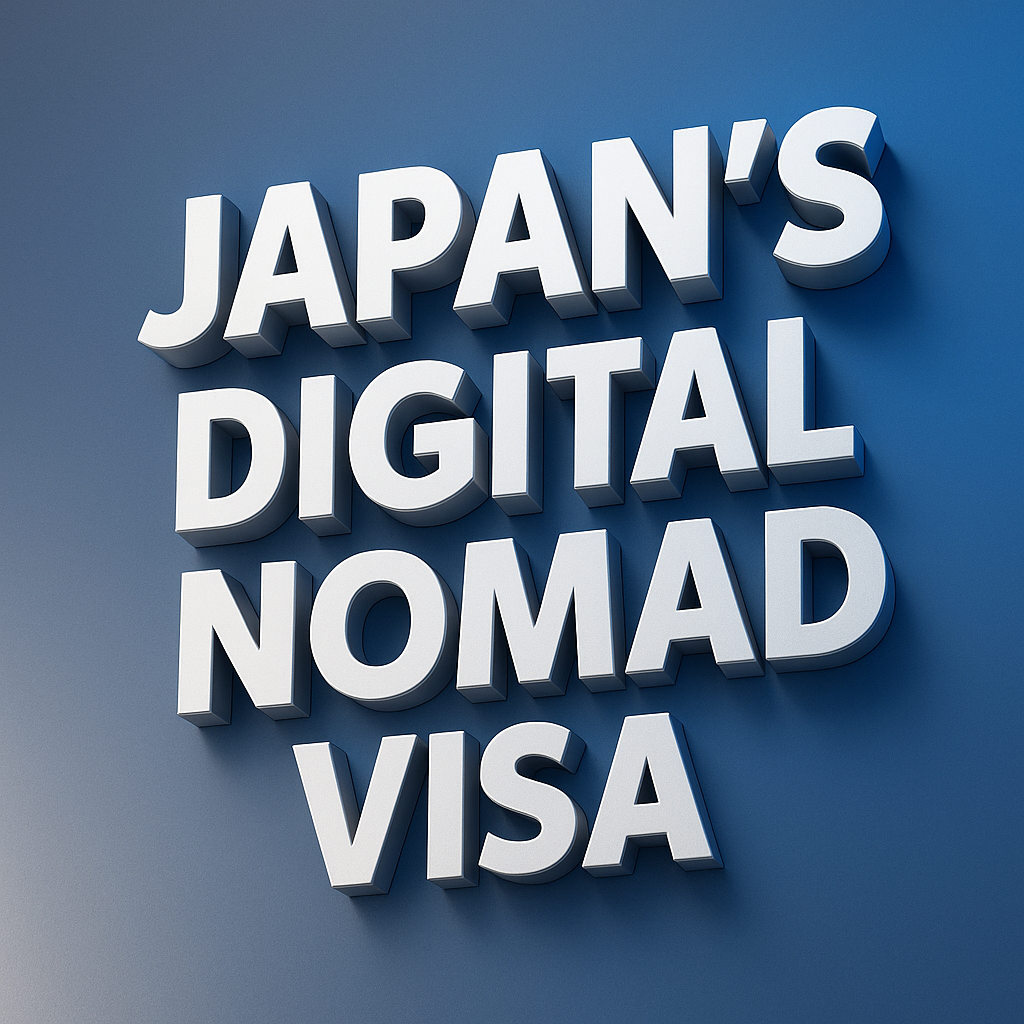Japan PR Pathways (2025): Your Guide to Professional, Family & Entry Routes
Japan offers multiple routes toward long-term residence and eventual Permanent Residency (PR). Below is a clear breakdown of the most common immigration pathways—professional visas (including the Highly-Skilled Professional), family-based statuses, and popular entry visas you can later pivot from.
1. The Professional Pathways (Most Common for Immigration)
A. The Fast Track: Highly-Skilled Professional (HSP) Visa
This is the single fastest path to Permanent Residency in Japan, designed for top-tier foreign talent.
| Key Benefit | Requirement |
|---|---|
| Fast-Track PR | Apply for PR after 1 year (with 80+ points) or 3 years (with 70+ points). |
| Eligibility | Your education, work experience, salary, and Japanese proficiency must total 70+ points on the official points table. |
| Other Benefits | Potential to bring parents and a domestic servant (under conditions); spouse faces fewer work restrictions. |
| New Subclasses | J-Skip (Special HSP) and J-Find (Future Creation Individual) are ultra-fast tracks for top talent and top university graduates, offering enhanced benefits. |
B. The Standard Route: General Work Visa (e.g., Engineer/Specialist in Humanities)
This is the most common status of residence for white-collar professionals.
| Key Benefit | Requirement |
|---|---|
| Broad Applicability | Covers fields like IT engineering, HR, accounting, marketing, foreign language instruction, and translation. |
| Eligibility | Job offer from a Japanese company and a relevant four-year degree OR 10 years of related work experience. |
| Path to PR | Typically 10 years continuous residence. If your salary is high, you may qualify by HSP points for PR in 3 years (70+) or 1 year (80+) even without holding HSP status. |
C. The Entrepreneur Route: Business Manager Visa
Ideal for founders who want to build in Japan.
| Key Benefit | Requirement |
|---|---|
| Be Your Own Boss | Allows you to establish and manage a company in Japan. |
| Eligibility | Minimum ¥5 million investment (≈ $32,000), a clear business plan, and a physical office in Japan; hire at least two full-time employees or meet an equivalent scale. |
| Startup Visa | Some cities offer a temporary Startup Visa (Designated Activities) for up to two years to prepare before applying for Business Manager. |
2. The Relationship & Family-Based Pathways (Easiest to Obtain)
If you have a personal tie to Japan, these are the most secure and straightforward options.
| Visa Type | Requirement | Work Restrictions | Path to PR |
|---|---|---|---|
| Spouse/Child of Japanese National | Legally married to a Japanese citizen or the biological child of a Japanese citizen. | None (can work full-time in any capacity). | Apply for PR after 1 year of marriage/residence and 3 years of continuous residence. |
| Spouse/Child of Permanent Resident | Legally married to a Japanese Permanent Resident. | None (can work full-time in any capacity). | Apply for PR after 1 year of marriage/residence and 5 years of continuous residence. |
| Long-Term Resident | For people of Japanese descent (e.g., third-generation Nikkei) or for special humanitarian cases. | None (can work full-time in any capacity). | Apply for PR after 5 years of continuous residence. |
3. The Entry & Pivot Pathways (Temporary Options)
Excellent ways to enter Japan and transition to a long-term work status after securing a job.
| Visa Type | Requirement | Work Status | Long-Term Goal |
|---|---|---|---|
| Student Visa | Enrollment in a language school, vocational school, or university. | Part-time up to 28 hours/week (with permission). | Primary channel for new graduates to transition to a General Work Visa. |
| Working Holiday Visa | Citizens of partner countries (usually under 30) with sufficient funds. | Work (full-/part-time) and travel for up to 1 year; not renewable. | Great trial period before seeking a sponsored work visa. |
| Digital Nomad Visa | Annual income over ¥10 million (≈ $64,000). | Remote work for foreign clients. | Temporary (6 months), not a path to PR, but a legal way to test living in Japan. |
KEY Migration Steps & Official Websites
- Find a Sponsor/Employer: For most work visas, an employer in Japan acts as your sponsor (exceptions: Business Manager, Family statuses).
- Obtain a Certificate of Eligibility (COE): Your sponsor applies at the Immigration Services Agency (ISA) in Japan—this is often the hardest step.
- Apply for a Visa: Once the COE is issued, take it to a Japanese Embassy/Consulate in your country for the visa sticker.
- Enter Japan: Receive your Residence Card (Zairyū Card) upon arrival.
| Category | Official Website |
|---|---|
| Immigration Services Agency (ISA) | ISA Official Website (English) |
| HSP Point System | ISA – Highly Skilled Professional Information |
| Visa Application (General) | MOFA – Work or Long-term stay |
Always verify: Requirements change. Check ISA and MOFA for the latest forms, fees, and eligibility before you apply.




